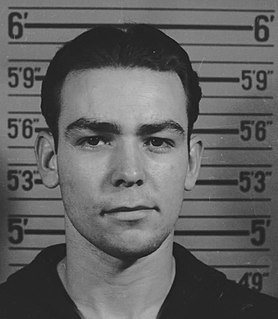This page is based on this
Wikipedia article Text is available under the
CC BY-SA 4.0 license; additional terms may apply.
Images, videos and audio are available under their respective licenses.

USCGC Sundew (WLB-404) is a 180-foot (55 m) sea going buoy tender (WLB). A Iris, or C-class tender, it was built by Marine Iron and Shipbuilding Corporation in Duluth, Minnesota. Sundew's preliminary design was completed by the United States Lighthouse Service and the final design was produced by Marine Iron and Shipbuilding Corporation in Duluth for the U.S. Coast Guard. On 29 November 1943 the keel was laid. It was launched on 8 February 1944 and commissioned on 24 August 1944. The original cost for the hull and machinery was $861,589.

USCGC Storis (WAGL-38/WMEC-38) was a light icebreaker and medium endurance cutter which served in the United States Coast Guard for 64 years and 5 months, making her the oldest vessel in commission with the Coast Guard fleet at the time of her decommissioning. She was also the first American vessel to circumnavigate North America.

Edwin John Roland, was a United States Coast Guard admiral and served as the twelfth Commandant of the Coast Guard from 1962 to 1966. During his tenure, Roland oversaw the replacement of many World War II era cutters under fleet modernization programs. He also assisted the U.S. Navy with operations in Vietnam by supplying crews and cutters for Operation Market Time. Roland was noted for his support in efforts to bring international safety standards to merchant shipping. Although Roland was already retired when the service was transferred from the Department of Treasury to the newly formed Department of Transportation in 1967, he was largely responsible for the advance planning for the move and the Coast Guard retaining its military responsibilities along with its transportation related functions.

USCGC Cowslip (WLB-277) is a 180-foot (55 m) sea going buoy tender (WLB). A Cactus-class vessel, she was built by Marine Ironworks and Shipbuilding Corporation in Duluth, Minnesota. Cowslip's preliminary design was completed by the United States Lighthouse Service and the final design was produced by Marine Iron and Shipbuilding Corporation in Duluth. On 16 September 1941 the keel was laid. She was launched on 11 April 1942 and commissioned on 17 October 1942. The original cost for the hull and machinery was $918,873.

USCGC Reliance (WMEC-615) is a United States Coast Guard medium endurance cutter. She is the first of the 210' Medium Endurance Cutter Fleet and the fourth Revenue Cutter / Coast Guard Cutter to bear the name Reliance. Constructed by Todd Shipyards in Houston, Texas and commissioned in 1964, she was originally homeported in Corpus Christi, Texas. Her duties included offshore oil rig inspections, fisheries, counter drug, alien migrant interdiction, marine pollution patrols, and search and rescue. Reliance has been homeported in Yorktown, Virginia, Port Canaveral, Florida and New Castle, New Hampshire. She is currently stationed at the Portsmouth Naval Shipyard in Kittery, Maine.

John Frederick Luecke was a politician from the U.S. state of Michigan.

USS Regulus (AF-57) was a Denebola-class stores ship acquired by the United States Navy. Her task was to carry stores, refrigerated items, and equipment to ships in the fleet, and to remote stations and staging areas.
USS Tetonkaha (AOG-41) was a Mettawee-class gasoline tanker acquired by the U.S. Navy for the dangerous task of transporting gasoline to warships in the fleet, and to remote Navy stations.

USCGC Iroquois (WHEC-43) was an Owasco class high-endurance cutter built for World War II service with the United States Coast Guard. The war ended before the ship was completed and consequently she never saw wartime service.

USCGC Tampa was a United States Coast Guard Cutter that served in the United States Coast Guard from 1921 to 1941, and then in the United States Navy from 1941 to 1947.

United States Coast Guard Base Boston is located in the North End, Boston, Massachusetts. It is home to a number of cutters, including the USCGC Escanaba (WMEC-907), USCGC Spencer (WMEC-905), USCGC Flying Fish, USCGC Pendant, and USCGC Seneca (WMEC-906), along with other small fleet units. The small boat station located on the base was re-opened in 2003 after being closed in 1996. It is also home to Flotilla 5-3 of the United States Coast Guard Auxiliary.

United States Coast Guard Station Woods Hole is a United States Coast Guard station located in Woods Hole, Massachusetts. The station is home to Sector Southeast New England.

Forrest O. Rednour (1923–1943) was a United States Coast Guardsman who received the Navy and Marine Corps Medal posthumously for his actions during World War II.

The Greenland Patrol was a United States Coast Guard operation during World War II. The patrol was formed to support the U.S. Army building aerodrome facilities in Greenland for ferrying aircraft to the British Isles, and to defend Greenland with special attention to preventing German operations in the northeast. Coast Guard cutters were assisted by aircraft and dog sled teams patrolling the Greenland coast for Axis military activities. The patrol escorted Allied shipping to and from Greenland, built navigation and communication facilities, and provided rescue and weather ship services in the area from 1941 through 1945.

Eli Parsons Royce was a surveyor, businessman, postmaster, and an attorney. He was the founder of the city of Escanaba, Michigan.
MV Monte Palomares was a Spanish cargo ship that operated from 1961 until her sinking in 1966 with the loss of 32 of her 38 crew.

















